India customers to view on amazon.in
Adopted Pets: How to Build their Trust?
Welcoming a new adopted pet into your home can be a life-changing experience. However, it requires patience, understanding, and a gentle approach to gain their trust. Many rescued pets have had traumatic experiences, making it challenging for them to adjust to their new environment.
- Understanding the Unique Challenges of Adopted Pets
- Creating a Safe Haven for Your New Pet
- The First Week: Critical Period for Trust Building
- Establishing Consistent Routines That Create Security
- Adopted Pets: How to Build Their Trust Through Body Language
- Communication Techniques That Foster Trust
- Gentle Approaches to Touch and Physical Interaction
- Building Trust Through Positive Training Methods
- Integrating Your Adopted Pet with Family Members
- Introducing Children to Adopted Pets
- Managing Interactions with Existing Pets
- Creating Positive Associations with Visitors
- Addressing Specific Trust Challenges
- Recognizing Progress: Signs Your Pet is Beginning to Trust
- Conclusion: A Lifetime of Trust and Companionship
- FAQ
- How long does it take for an adopted pet to adjust to a new home?
- What are some signs that my adopted pet is feeling anxious or stressed?
- How can I help my adopted pet overcome food aggression?
- What are some effective ways to introduce my adopted pet to other pets in the household?
- How can I help my adopted pet feel more comfortable with handling and touch?
- What are some common mistakes to avoid when trying to build trust with an adopted pet?
- How can I create a safe and comfortable environment for my adopted pet?
- What role does positive reinforcement play in building trust with an adopted pet?
- How can I help my adopted pet overcome noise sensitivities or fear of specific objects?
- What are some signs that my adopted pet is beginning to trust me?
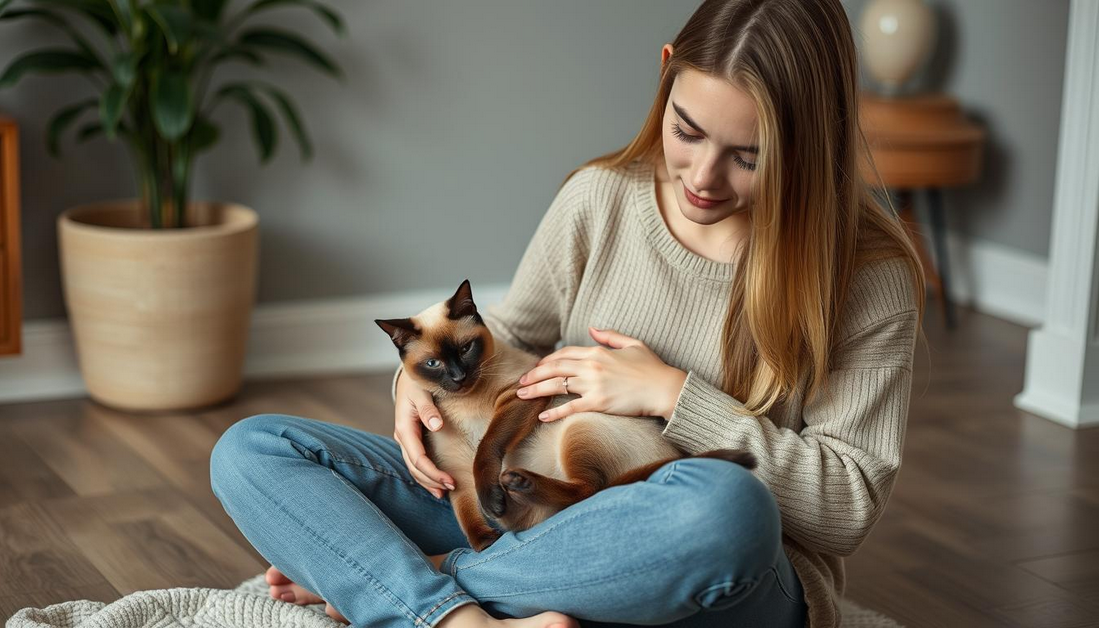
Building trust with your new pet is crucial for creating a strong, loving bond. By understanding their needs and providing a safe, nurturing environment, you can help your pet feel secure and valued.
Key Takeaways
- Understand the challenges faced by adopted pets
- Provide a safe and nurturing environment
- Be patient and gentle when interacting with your pet
- Establish a routine to create a sense of security
- Show love and affection to help your pet feel valued
Understanding the Unique Challenges of Adopted Pets
Understanding the backgrounds of adopted pets is crucial for helping them overcome their fears and build trust. Adopted pets often come with emotional baggage due to past traumas, which can significantly impact their behavior and ability to form strong bonds with their new owners.

Common Trauma Backgrounds in Rescue Animals
Rescue animals often have histories marked by trauma, including experiences in shelters, abandonment, and abuse. These experiences can profoundly affect their trust in humans.
Shelter Experiences and Their Impact
Shelter environments, though necessary, can be stressful for animals. The noise, lack of personal space, and unpredictable environments can contribute to anxiety and trust issues in adopted pets.
Previous Abandonment or Abuse Effects
Previous abandonment or abuse can lead to deep-seated trust issues. Pets may become fearful or defensive, making it challenging to form a bond with their new owners.
Why Trust Issues Develop in Adopted Pets
Trust issues in adopted pets develop as a result of their survival mechanisms and defensive behaviors. Understanding these behaviors is key to helping pets feel secure.
Survival Mechanisms and Defensive Behaviors
Adopted pets may develop defensive behaviors as a way to protect themselves from perceived threats. Recognizing these behaviors is crucial for creating a safe environment.
Species-Specific Trust Challenges
Different species exhibit different trust challenges. For example, dogs may be more inclined to please their owners, while cats may be more independent. Understanding these species-specific traits can help tailor your approach to building trust.
| Species | Common Trust Challenges | Tailored Approach |
|---|---|---|
| Dogs | Fear of abandonment, obedience issues | Positive reinforcement training, consistent routines |
| Cats | Independence, fear of touch | Gradual touch desensitization, respecting personal space |
Creating a Safe Haven for Your New Pet
Creating a safe haven for your adopted pet is crucial for their emotional well-being and adjustment. When you bring a new pet into your home, it’s essential to provide a secure and comfortable environment that allows them to feel at ease.
Setting Up a Comfort Zone
A comfort zone is a designated area where your pet can retreat when feeling overwhelmed. This space should be quiet, cozy, and free from stressors.
Ideal Spaces for Dogs vs. Cats
Dogs often prefer a crate with soft bedding, while cats may favor a secluded, elevated spot. Understanding your pet’s preferences is key to creating an ideal comfort zone.
Essential Comfort Items
Comfort items such as familiar toys, blankets, or even a piece of clothing with your scent can provide reassurance. These items help your pet feel more secure in their new environment.
Managing Environmental Stressors
Environmental stressors, such as loud noises or other pets, can significantly impact your adopted pet’s sense of security. Gradual introductions to new environments and stressors can help mitigate these effects.
Safety-Proofing Your Home for Anxious Pets
Safety-proofing involves removing hazards and securing toxic substances. For anxious pets, it’s also crucial to minimize exposure to triggers that may cause stress or anxiety.

The First Week: Critical Period for Trust Building
The initial days with your adopted pet are critical in establishing a sense of security and trust. This period is crucial as it sets the foundation for your pet’s adjustment to their new environment.
Day-by-Day Adjustment Timeline
Understanding the day-by-day adjustment process can help you tailor your approach to your pet’s needs. Here’s a breakdown of what to expect:
The Critical First 24 Hours
The first 24 hours are about providing a safe space and minimizing stress. Keep your pet’s environment calm and quiet, and limit interactions to allow them to acclimate.
Weeks 1-4 Progression
Over the next few weeks, your pet will continue to adjust. Here’s a general progression you might observe:
| Week | Expected Behavior | Actions to Take |
|---|---|---|
| 1 | Fearful, hesitant | Provide a safe space, minimal interaction |
| 2-3 | Exploratory behavior | Encourage exploration, start basic training |
| 4 | Increased confidence | Gradually increase socialization and exercise |
What to Do and What to Avoid
During the first week, it’s essential to strike the right balance between comfort and discipline. Avoid sudden movements and loud noises, as these can exacerbate fear. Instead, focus on creating a calm and predictable environment.
Some key actions to take include establishing a daily routine, providing a comfortable space, and being patient. Conversely, avoid pushing your pet to interact if they’re not ready, and refrain from punishing fear-based behaviors.

Establishing Consistent Routines That Create Security
Adopted pets benefit greatly from consistent routines that provide a sense of stability. By establishing a regular daily schedule, you can help your pet feel more secure and build trust. A consistent routine helps in reducing anxiety and stress, making it easier for your pet to adjust to its new environment.
Feeding Schedules That Build Confidence
A well-planned feeding schedule is essential for adopted pets. It not only ensures they are well-nourished but also helps in building trust. Feeding at the same times each day can create a sense of predictability, making your pet feel more secure. For instance, a morning and evening feeding routine can be very comforting. You can also use mealtime as an opportunity to bond with your pet, by using a calm and gentle tone while feeding.
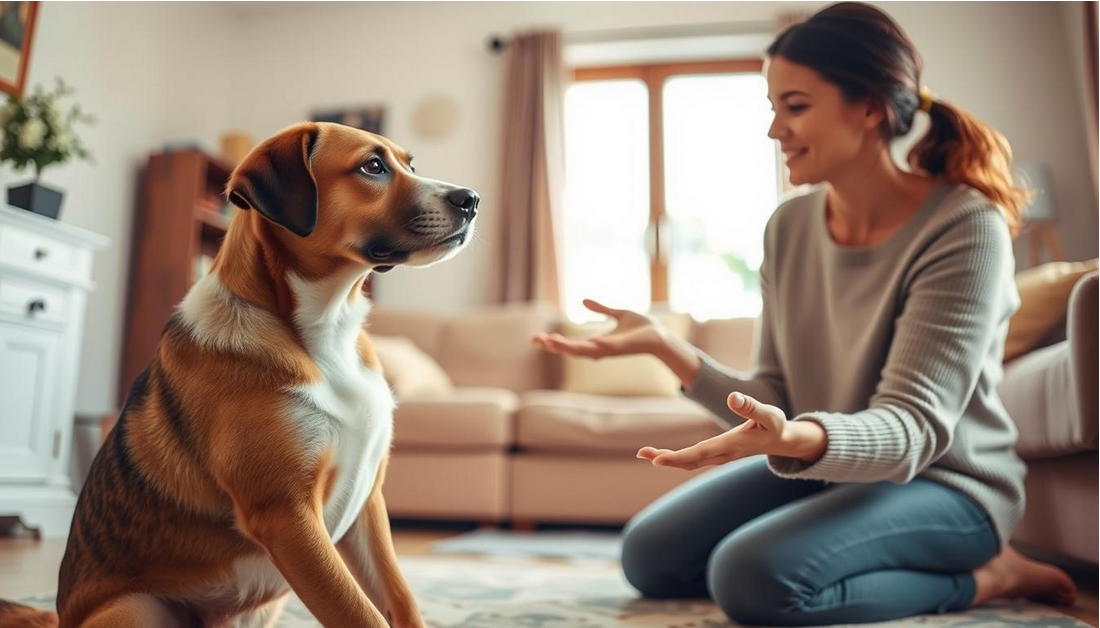
Exercise and Play Patterns for Different Personality Types
Exercise and play are crucial elements of a pet’s daily routine. Different pets have different personality types and energy levels, so it’s essential to tailor the exercise and play accordingly. For high-energy pets, more vigorous activities like running or fetch can be very beneficial. On the other hand, for pets that are more laid-back, gentle play or short walks may be more appropriate.
| Pet Personality Type | Exercise/Play Recommendation |
|---|---|
| High-Energy | Running, Fetch, Agility Training |
| Laid-Back | Gentle Play, Short Walks, Relaxation Techniques |
| Anxious/Nervous | Calm Walks, Gentle Massage, Quiet Play |
Adopted Pets: How to Build Their Trust Through Body Language
Building trust with adopted pets is a delicate process that heavily relies on understanding and utilizing positive body language. When you welcome a new pet into your home, they may feel anxious or fearful due to past experiences. Your body language can significantly influence their ability to feel safe and build trust.
Non-Threatening Postures and Movements
Using non-threatening postures and movements is crucial when interacting with adopted pets. This involves being mindful of your approach, ensuring that you do not inadvertently cause your pet additional stress.
Species-Specific Approach Techniques
Different species respond differently to various approaches. For example, dogs may appreciate a gentle, calm approach, while cats might prefer a more gradual, slow blink interaction to signal friendliness.
Avoiding Intimidating Behaviors
It’s essential to avoid behaviors that might be perceived as intimidating, such as direct stares, loud noises, or sudden movements. Instead, opt for calm, gentle actions that help your pet feel at ease.
Reading Your Pet’s Signals
Understanding your pet’s body language is just as important as managing your own. By recognizing signs of fear versus growing comfort, you can adjust your interactions to better support your pet’s emotional state.
Signs of Fear vs. Growing Comfort
Signs of fear can include tail tucking, avoiding eye contact, or hiding. Conversely, signs of growing comfort may involve relaxed postures, wagging tails, or initiating interaction.
Responding Appropriately to Stress Signals
If your pet exhibits stress signals, it’s crucial to respond with calmness and patience. Give them space if needed, and avoid pushing them beyond their comfort zone.

| Pet Signal | Interpretation | Response |
|---|---|---|
| Tucked tail | Fear or anxiety | Give space, gentle voice |
| Relaxed posture | Comfort or trust | Positive reinforcement |
| Avoiding eye contact | Fear or submission | Gentle, calm approach |
Communication Techniques That Foster Trust
Effective communication is the cornerstone of fostering trust with your newly adopted pet. The way you interact with your pet can significantly influence their comfort level and confidence in their new environment.
Voice Tone and Volume Adjustments
Adjusting your voice tone and volume can help create a calming atmosphere for your pet. Speaking in a soft, gentle voice can be very soothing, while loud noises can startle or frighten them. It’s essential to be mindful of your tone when interacting with your pet, as they can pick up on your emotions.
Using Positive Reinforcement Effectively
Positive reinforcement is a powerful tool for building trust with your adopted pet. This technique involves rewarding desired behaviors, which encourages your pet to repeat them.
Treat-Based Trust Building
Treats can be an effective way to build trust, as they provide a tangible reward for good behavior. Choose healthy, pet-safe treats and use them consistently to reinforce positive actions.
Praise and Affirmation Methods
In addition to treats, verbal praise and affirmation can go a long way in making your pet feel secure and valued. Be sincere and specific with your praise to help your pet understand what they’re doing right.
| Technique | Description | Benefit |
|---|---|---|
| Soft Voice | Speaking gently to your pet | Creates a calming atmosphere |
| Treat Rewards | Using treats to reward good behavior | Encourages positive behavior |
| Verbal Praise | Giving sincere, specific praise | Boosts confidence and security |
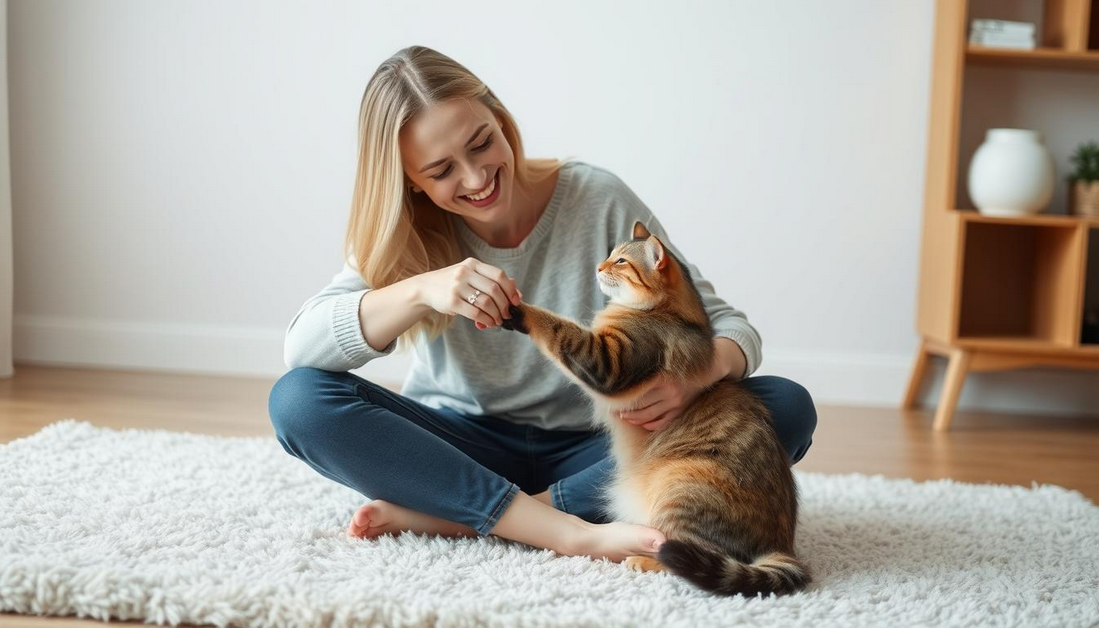
Gentle Approaches to Touch and Physical Interaction
Gentle touch is a powerful tool for building trust with adopted pets. Many pets, especially those with a history of trauma, may initially be hesitant or fearful of physical interaction. By adopting a gentle and considerate approach, you can help your pet feel more comfortable and secure.
Approaching Fearful Pets Safely
When interacting with fearful pets, it’s essential to move slowly and calmly, avoiding sudden movements that might startle them. Let your pet initiate contact whenever possible, and be mindful of their body language. If they appear tense or are avoiding eye contact, it’s best to give them space.
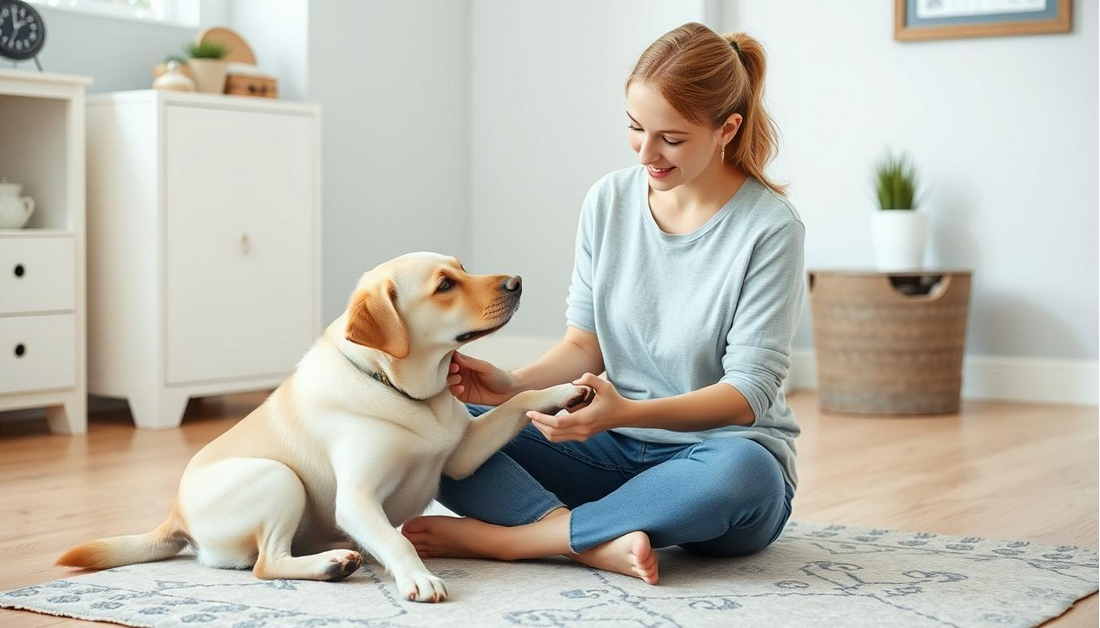
Gradual Touch Desensitization Techniques
Touch desensitization involves gradually introducing your pet to being touched in a controlled and gentle manner. Start with light, brief touches, and gradually increase the duration and intensity based on your pet’s comfort level. Reward your pet with treats and praise to associate touch with positive experiences.
Recognizing When to Back Off
It’s crucial to recognize your pet’s stress signals, such as tail tucking, growling, or avoiding eye contact. If you notice any of these signs, it’s essential to back off and give your pet space. Forcing interaction can undermine trust and create more anxiety.
| Pet Stress Signals | Action to Take |
|---|---|
| Tail tucking, growling | Give space, avoid interaction |
| Avoiding eye contact | Let pet initiate contact |
| Tensing up | Slow down interactions, be calm |
By being sensitive to your pet’s needs and boundaries, you can build a strong foundation of trust through gentle and appropriate physical interaction.
Building Trust Through Positive Training Methods
Positive reinforcement is a powerful tool for establishing trust with rescue pets. By focusing on rewarding desired behaviors, you can help your adopted pet feel more secure and confident.
Basic Commands That Enhance Security and Confidence
Teaching basic commands is an effective way to build trust with your adopted pet. Commands like “sit,” “stay,” and “come” provide a sense of structure and help your pet understand what is expected of them.
Using positive reinforcement techniques, such as treats and praise, can encourage your pet to learn these commands quickly. For example, when teaching “sit,” hold a treat above your pet’s head and move it backwards towards their tail. As they follow the treat with their nose, their bottom will lower into a sitting position.
Reward-Based Training for Anxious Pets
Reward-based training is particularly beneficial for anxious pets, as it creates a positive association with the learning process. Techniques like clicker training can be highly effective.
Clicker Training Benefits
Clicker training involves using a small device that makes a clicking sound to mark the exact moment your pet performs a desired behavior. This method is precise and helps your pet understand what they did right.
Short, Positive Training Sessions
For anxious pets, it’s essential to keep training sessions short and positive. Aim for sessions that last around 5-10 minutes, and always end on a positive note while your pet is still engaged.
| Training Method | Benefits | Tips for Implementation |
|---|---|---|
| Clicker Training | Precise, positive reinforcement | Start with simple commands, use treats |
| Reward-Based Training | Encourages desired behaviors | Use treats, praise, and affection |
| Short Training Sessions | Reduces anxiety, keeps engagement | Limit to 5-10 minutes, end positively |
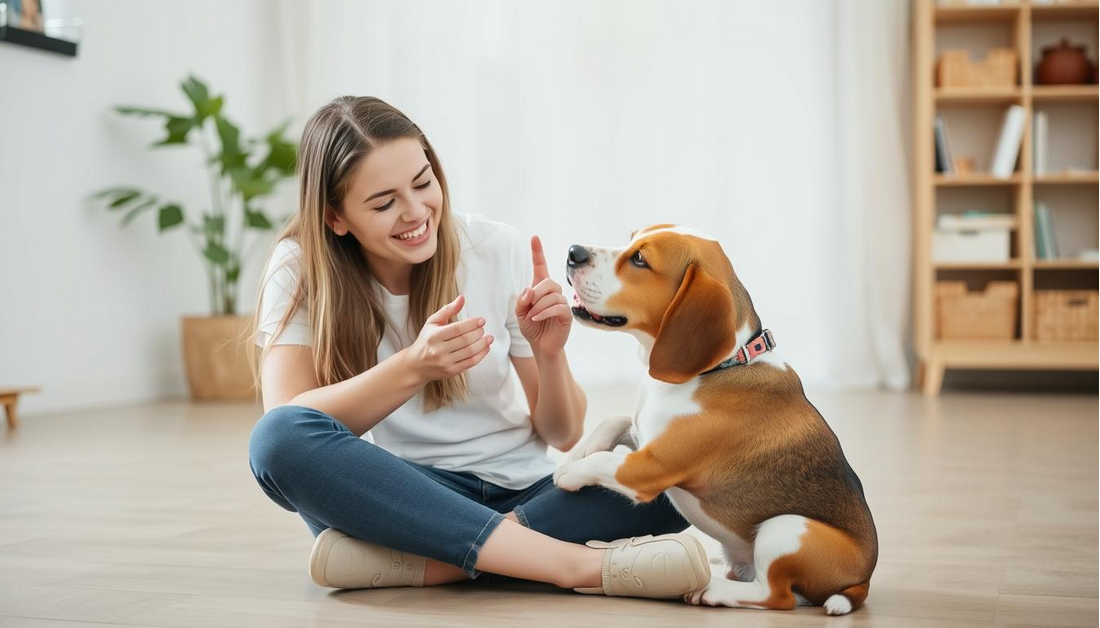
Integrating Your Adopted Pet with Family Members
Creating a harmonious household with an adopted pet involves careful planning and gentle introductions. As you welcome your new pet into the family, it’s crucial to consider the dynamics between your pet, family members, existing pets, and visitors.
Introducing Children to Adopted Pets
When introducing children to adopted pets, it’s essential to teach them how to interact gently and respectfully. Supervise interactions closely to ensure the pet feels safe and secure. Encourage children to let the pet approach them and to avoid sudden movements or loud noises.
Managing Interactions with Existing Pets
Managing interactions between your adopted pet and existing pets requires patience. Start with slow introductions in a neutral area, allowing pets to become familiar with each other’s scents and sounds before direct contact. Monitor their behavior closely and reward calm behavior.
Creating Positive Associations with Visitors
To help your adopted pet feel comfortable with visitors, start by exposing them to new people in a controlled environment. Encourage visitors to offer treats and speak calmly to help your pet associate them with positive experiences.
| Interaction Tips | Benefits | Precautions |
|---|---|---|
| Supervise children and pets | Ensures safety for both | Avoid leaving them alone |
| Gradual introductions to other pets | Reduces stress and aggression | Monitor body language closely |
| Positive reinforcement with visitors | Creates a welcoming atmosphere | Be cautious with pet’s initial reactions |
Addressing Specific Trust Challenges
Adopted pets often come with unique trust challenges that require patient and tailored approaches to overcome. These challenges can range from food aggression to fear of specific triggers, and addressing them is crucial for building a strong, trusting relationship with your pet.
Helping Food-Aggressive Pets
Food aggression is a common issue in adopted pets, often stemming from past experiences where they had to compete for food. To address this, it’s essential to establish a consistent feeding routine and create a safe eating environment. Gradually introducing positive reinforcement techniques, such as offering treats during meals, can help your pet associate feeding time with positive experiences.
Managing Fear of Specific Triggers
Some adopted pets develop fears or phobias to specific triggers, such as noises or certain objects. Understanding what triggers your pet’s fear is the first step in managing it.
Noise Sensitivities
For pets with noise sensitivities, gradual exposure to the feared noise at a low volume, paired with positive reinforcement, can be an effective desensitization technique.
Fear of Specific Objects or Situations
Similarly, for pets afraid of specific objects or situations, gradual and controlled exposure can help them become more confident. It’s crucial to proceed at the pet’s comfort level to avoid exacerbating the fear.
Overcoming Fear of Handling
For pets that fear handling, starting with small, gentle interactions and gradually increasing touch can help. It’s essential to be patient and observe your pet’s comfort level, backing off if they show signs of distress.
| Challenge | Approach | Outcome |
|---|---|---|
| Food Aggression | Consistent feeding routine, positive reinforcement | Reduced aggression during meals |
| Noise Sensitivities | Gradual exposure, positive reinforcement | Increased tolerance to noise |
| Fear of Handling | Gentle, gradual handling | Increased comfort with touch |
Recognizing Progress: Signs Your Pet is Beginning to Trust
One of the most fulfilling aspects of pet adoption is witnessing the gradual development of trust between you and your pet. As your pet becomes more comfortable, you’ll start to notice subtle yet significant changes in their behavior.
Behavioral Indicators of Growing Trust
As trust grows, your pet will exhibit specific behaviors that signal their increasing comfort and confidence around you. These indicators can be observed in their body language and interactions.
Body Language Changes
A pet that’s beginning to trust you may display relaxed body language, such as unclenched jaws, softened eyes, and a wagging tail. These physical cues are essential signs that your pet feels safe and at ease in your presence.
Interaction Milestones
Interaction milestones, such as initiating contact, accepting treats, and engaging in play, are strong indicators of growing trust. When your pet starts to take the initiative in interactions, it’s a clear sign that they’re becoming more confident in their relationship with you.
Timeline Expectations for Different Animals
The timeline for developing trust can vary significantly between different animals. Factors such as age, breed, and past experiences play a crucial role in determining how quickly your pet will warm up to you. Generally, younger pets tend to adapt faster than older ones, while some breeds are naturally more inclined to form close bonds.
Understanding these differences and being patient is key to fostering a strong, trusting relationship with your adopted pet.
Conclusion: A Lifetime of Trust and Companionship
Building a strong bond with your adopted pet is a journey that leads to a lifetime of trust and companionship. By following the steps outlined in this article, you can create a safe and nurturing environment that allows your pet to feel secure and loved. Patience, consistency, and understanding are essential in helping your adopted pet overcome their unique challenges and develop a deep and lasting bond with you.
As you continue on this journey, remember that every small step counts, and celebrating the small victories along the way can be incredibly rewarding. By doing so, you’ll be well on your way to building a lifetime of trust and companionship with your adopted pet, enriching both your lives and creating a truly special bond.
Nurturing this bond takes time and effort, but the rewards are immeasurable. With a strong foundation of trust, you and your adopted pet can enjoy a deep and fulfilling companionship with adopted pets, built on mutual understanding and love.
FAQ
How long does it take for an adopted pet to adjust to a new home?
The adjustment period can vary significantly depending on the pet’s background, age, and temperament. Generally, it can take anywhere from a few days to several weeks or even months for a pet to fully adjust.
What are some signs that my adopted pet is feeling anxious or stressed?
Common signs of anxiety or stress in pets include panting, pacing, hiding, loss of appetite, and destructive behavior. It’s essential to recognize these signs and take steps to alleviate your pet’s stress.
How can I help my adopted pet overcome food aggression?
Helping a food-aggressive pet requires patience and a gradual approach. Start by feeding your pet in a quiet, distraction-free area, and gradually introduce your presence while they eat. Reward calm behavior with treats.
What are some effective ways to introduce my adopted pet to other pets in the household?
Introducing pets to each other should be done gradually and under controlled circumstances. Start with visual introductions, then progress to scent introductions, and finally, supervised face-to-face interactions.
How can I help my adopted pet feel more comfortable with handling and touch?
Gradual touch desensitization is key. Start with light, gentle touch, and gradually increase the intensity and duration. Reward your pet with treats and praise for calm behavior.
What are some common mistakes to avoid when trying to build trust with an adopted pet?
Common mistakes include rushing the trust-building process, being too pushy or aggressive, and not providing a safe and comfortable environment. It’s essential to be patient and let your pet set the pace.
How can I create a safe and comfortable environment for my adopted pet?
Creating a safe haven involves providing a quiet, comfortable space, managing environmental stressors, and safety-proofing your home. This can include setting up a comfort zone, reducing noise levels, and securing toxic substances.
What role does positive reinforcement play in building trust with an adopted pet?
Positive reinforcement is crucial in building trust. Rewarding good behavior with treats, praise, and affection can encourage positive behaviors and strengthen your bond with your pet.
How can I help my adopted pet overcome noise sensitivities or fear of specific objects?
Desensitization and counterconditioning techniques can be effective. Start by exposing your pet to the feared stimulus at a low level, then gradually increase the intensity while rewarding calm behavior.
What are some signs that my adopted pet is beginning to trust me?
Signs of growing trust include increased interaction, reduced anxiety, and more relaxed body language. Your pet may also begin to initiate contact or show affection.







